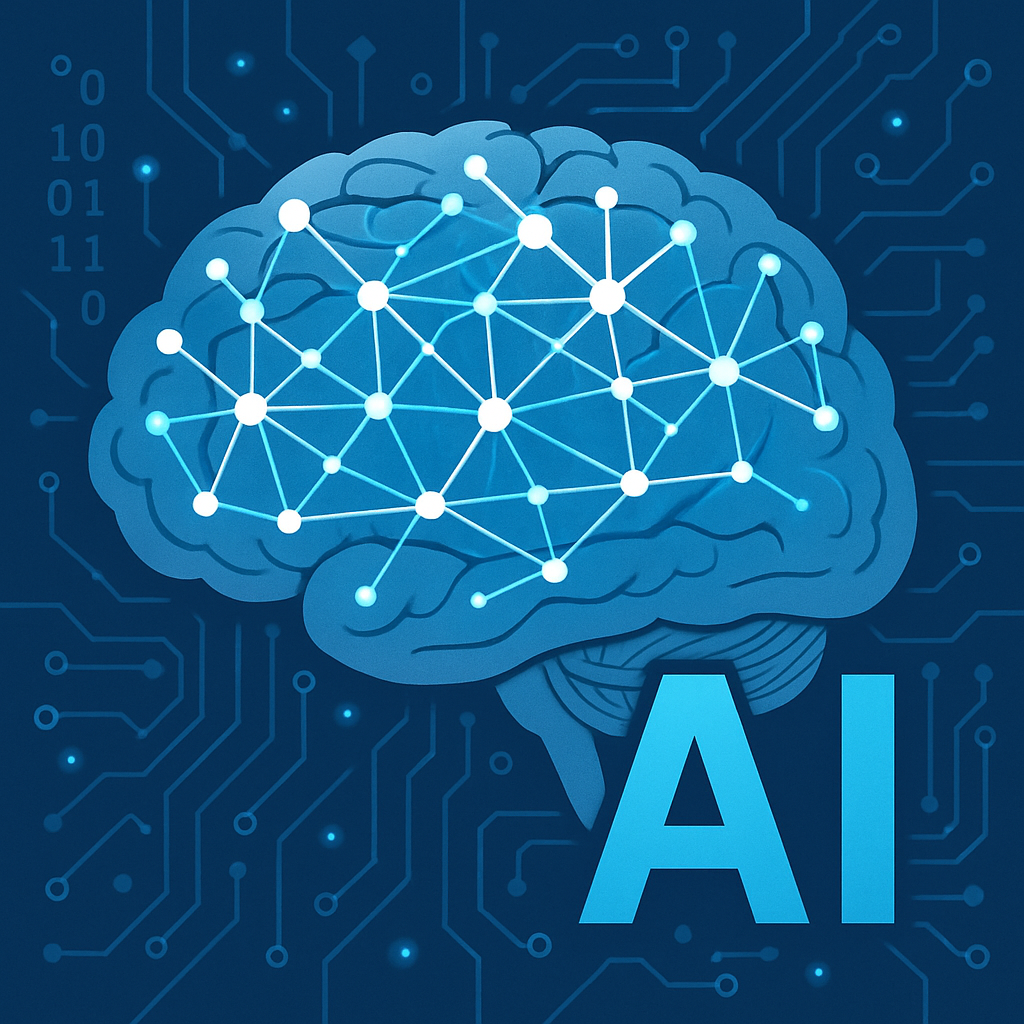Related Events
Related case studies
What really makes AI work, and what’s holding us back.

Real Change Doesn’t Come from Code — It Comes from Clarity
The 2025 CASE Europe Annual Conference (CEAC) took place in Birmingham last week. I’ve honestly lost count of how many I’ve attended over the years. My first was back in 2005, and I’ve been to most of them since.
So why do I keep going?
I’m a big believer in CASE and the community it nurtures to advance our profession.
It’s a great opportunity to hear from others across the sector who are innovating in the challenging world we find ourselves in. It’s also a great opportunity to share the new thinking and work going on at SMRS – this year we ran sessions on propensity modelling to enhance targeting strategies, and on portfolio strategy, exploring how to develop and manage an effective portfolio that meets the needs of both students and employers.
But I also like to attend CEAC to hear from people from outside of the sector, and this year we led a session to do exactly that…
AI features in most conversations at conferences, and conference programmes have certainly been awash with AI-related sessions over the past couple of years, so we wanted to address this important topic a bit differently. Our aim was to bring in an external perspective. Someone not only immersed in the latest developments but also personally connected to the innovators and business leaders shaping the technology that’s rapidly becoming part of our daily lives. As it happens, that person was close to home: Zoe Kleinman, the BBC’s Technology Editor, and sister of our very own Aimee Kleinman.
Zoe’s talk was both inspiring and grounded, offering a glimpse of the extraordinary advances being made in artificial intelligence, and a thoughtful take on what they mean for us as marketers and communicators.
It’s clear that AI is already reshaping industries in ways that are mind-bogglingly fast, but making it work in our world requires clarity, structure and intent. Her message wasn’t about hype. It was about how to use AI well.
And, importantly, Zoe made a point that often gets missed in the wider conversation. There’s a big difference between experimenting with AI on your personal ChatGPT account and building enterprise-level AI capability, where data and systems are fully connected to work together to deliver real, transformational change.
As an aside this type of enterprise-level AI is exactly the type of work we’ve been doing for the last 10 years – read my blog here from a couple of years ago.
At SMRS, we regularly see how poor system integration holds institutions back. If we don’t fix these foundations, AI can only take us so far, which is why they need to be part of every conversation about the future.
AI isn’t one thing. It’s a broad church. It ranges from the quick wins of generative content tools, to deep organisational transformation driven by data and machine learning. And for higher education, the opportunities span every corner of the marketing and student journey.
Zoe outlined four areas in particular where institutions can, and should, be focusing their energy: understanding your audience, personalisation and targeting, content creation, and real-time campaign optimisation. Straightforward, perhaps - but that’s exactly the point. Beyond the hype, these fundamentals are what enable AI to deliver real impact in marketing. From making sense of complex data and delivering genuinely tailored experiences, to creating meaningful content and adapting campaigns dynamically.
AI isn’t a quick fix.
It’s a set of tools that demand thoughtful application, ethical awareness and clear objectives.
As higher education marketers, we need to move beyond experimentation and towards strategic integration: embedding AI into how we understand audiences, design journeys and measure success. Aligning it with institutional goals, data governance, and the human expertise that makes our sector unique.
At SMRS, we’re helping our clients take those steps. Building AI capability that’s purposeful, measurable, and genuinely transformative. Using predictive modelling, machine learning and AI-driven optimisation to connect systems, unlock audience understanding and deliver more intelligent, human-centred marketing. Because the real opportunity isn’t just to do marketing differently; it’s to understand and engage people better.
Other webinars
See all webinars-

Culture Forward: Shaping the future of workplace culture
{% module_block module "widget_84147eb9-0a83-459f-a092-8d51c83b2b99" %}{% module_attribute "background" is_json="true" %}{"color":"#F1CC01","css":"#F1CC01","hex":"#F1CC01","opacity":100,"rgb":"rgb(241, 204, 1)","rgba":"rgba(241, 204, 1, 1)"}{% end_module_attribute %}{% module_attribute "block1_background_image" is_json="true" %}{"alt":"circle-black","height":262,"loading":"lazy","max_height":262,"max_width":256,"size_type":"auto","src":"https://25966858.fs1.hubspotusercontent-eu1.net/hubfs/25966858/Events%20and%20Our%20Insights/circle-black.png","width":256}{% end_module_attribute %}{% module_attribute "book_your_ticket_url" is_json="true" %}{"content_id":null,"href":"https://share-eu1.hsforms.com/10IkaYDScQ9G1z5tJ_QRMAgfgk5m","href_with_scheme":"https://share-eu1.hsforms.com/10IkaYDScQ9G1z5tJ_QRMAgfgk5m","type":"EXTERNAL"}{% end_module_attribute %}{% module_attribute "child_css" is_json="true" %}{}{% end_module_attribute %}{% module_attribute "choose_presenters" is_json="true" %}[{"columns":{"hs_child_table_id":0,"message":"Hafsa.aziz@smrs.co.uk","call_back":"https://meetings-eu1.hubspot.com/meetings/hafsa-aziz/meeting-with-hafsa-sophia-?uuid=904d4d0c-e24d-4e5c-93c7-6f92523888fd","hs_is_edited":false,"hs_updated_at":1750860099444,"name":"Hafsa Aziz","hs_deleted_at":0,"team_name":"Culture Consultant","hs_id":233870773448,"hs_created_by_user_id":67876044,"hs_initial_published_at":1746517555970,"hs_published_at":1762504949284,"hs_created_at":1746517504074,"linkedin":"https://uk.linkedin.com/in/hafsa-aziz-57803b92","picture":{"altText":"Hafsa_0000_1080","fileId":112133140983,"height":4644,"type":"image","url":"https://25966858.fs1.hubspotusercontent-eu1.net/hubfs/25966858/Hafsa_0000_1080.jpg","width":4644},"hs_updated_by_user_id":60647974},"id":233870773448,"table_id":483015920,"table_name":"presenters"},{"columns":{"hs_child_table_id":0,"message":"richard.badley@smrs.co.uk","call_back":"https://meetings-eu1.hubspot.com/richard-badley","hs_is_edited":false,"hs_updated_at":1750859575521,"name":"Richard Badley","hs_deleted_at":0,"team_name":"Director","hs_id":233870773447,"hs_created_by_user_id":67876044,"hs_initial_published_at":1746517555970,"hs_published_at":1762504949284,"hs_created_at":1746517504051,"linkedin":"https://uk.linkedin.com/in/richardbadley","picture":{"altText":"Richard B _CW_2348_1080px","fileId":107594154954,"height":1080,"type":"image","url":"https://25966858.fs1.hubspotusercontent-eu1.net/hubfs/25966858/Richard%20B%20_CW_2348_1080px.jpg","width":1080},"hs_updated_by_user_id":60647974},"id":233870773447,"table_id":483015920,"table_name":"presenters"}]{% end_module_attribute %}{% module_attribute "css" is_json="true" %}{}{% end_module_attribute %}{% module_attribute "definition_id" is_json="true" %}null{% end_module_attribute %}{% module_attribute "event_date_and_time" is_json="true" %}1768914000000{% end_module_attribute %}{% module_attribute "event_date_color" is_json="true" %}{"color":"#ffffff","css":"#ffffff","hex":"#ffffff","opacity":100,"rgb":"rgb(255, 255, 255)","rgba":"rgba(255, 255, 255, 1)"}{% end_module_attribute %}{% module_attribute "field_types" is_json="true" %}{"event_date_and_time":"datetime","select_event_type":"choice","paragraph_text_color":"color","tag_to_be_displayed":"tag","block1_background_image":"image","custom_class":"text","cta_button_text":"text","min_height_mobile":"number","disable_section":"boolean","background":"color","paragraph":"richtext","min_height_desktop":"number","book_your_ticket_url":"url","placeholder":"image","choose_presenters":"hubdbrow","embed_video":"boolean","vimeo_id":"text","event_date_color":"color","headline_text":"text","share_link":"link","linkedin_link":"link","headline_text_color":"color","hide_book_your_ticket":"boolean"}{% end_module_attribute %}{% module_attribute "headline_text" is_json="true" %}"Culture Forward: Trends, tools, and connections shaping the future of workplace culture "{% end_module_attribute %}{% module_attribute "headline_text_color" is_json="true" %}{"color":"#000000","css":"#000000","hex":"#000000","opacity":100,"rgb":"rgb(0, 0, 0)","rgba":"rgba(0, 0, 0, 1)"}{% end_module_attribute %}{% module_attribute "hide_book_your_ticket" is_json="true" %}false{% end_module_attribute %}{% module_attribute "label" is_json="true" %}null{% end_module_attribute %}{% module_attribute "module_id" is_json="true" %}236642190552{% end_module_attribute %}{% module_attribute "paragraph" is_json="true" %}" "{% end_module_attribute %}{% module_attribute "path" is_json="true" %}"/smrs/website-theme/modules/pages/Hero_Banner_with_Fusion_Video"{% end_module_attribute %}{% module_attribute "placeholder" is_json="true" %}{"alt":"hafsa","height":1080,"max_height":1080,"max_width":1920,"size_type":"exact","src":"https://25966858.fs1.hubspotusercontent-eu1.net/hubfs/25966858/hafsa.jpg","width":1920}{% end_module_attribute %}{% module_attribute "schema_version" is_json="true" %}2{% end_module_attribute %}{% module_attribute "smart_objects" is_json="true" %}null{% end_module_attribute %}{% module_attribute "smart_type" is_json="true" %}"NOT_SMART"{% end_module_attribute %}{% module_attribute "tag" is_json="true" %}"module"{% end_module_attribute %}{% module_attribute "tag_to_be_displayed" is_json="true" %}"employer"{% end_module_attribute %}{% module_attribute "type" is_json="true" %}"module"{% end_module_attribute %}{% module_attribute "vimeo_id" is_json="true" %}""{% end_module_attribute %}{% module_attribute "wrap_field_tag" is_json="true" %}"div"{% end_module_attribute %}{% end_module_block %} {% module_block module "widget_34c28e40-baae-433a-93b4-b003fa74d80c" %}{% module_attribute "accordion" is_json="true" %}false{% end_module_attribute %}{% module_attribute "add_custom_class" is_json="true" %}"blogTopicCovered "{% end_module_attribute %}{% module_attribute "align_items" is_json="true" %}"align-items-start"{% end_module_attribute %}{% module_attribute "background" is_json="true" %}{"color":"#008486","css":"#008486","hex":"#008486","opacity":100,"rgb":"rgb(0, 132, 134)","rgba":"rgba(0, 132, 134, 1)"}{% end_module_attribute %}{% module_attribute "background_image" is_json="true" %}{"alt":"yellow-square-full","height":186,"loading":"lazy","max_height":186,"max_width":155,"size_type":"auto","src":"https://25966858.fs1.hubspotusercontent-eu1.net/hubfs/25966858/Events%20and%20Our%20Insights/yellow-square-full.png","width":155}{% end_module_attribute %}{% module_attribute "child_css" is_json="true" %}{}{% end_module_attribute %}{% module_attribute "content_alignment" is_json="true" %}"justify-content-center"{% end_module_attribute %}{% module_attribute "css" is_json="true" %}{}{% end_module_attribute %}{% module_attribute "definition_id" is_json="true" %}null{% end_module_attribute %}{% module_attribute "field_types" is_json="true" %}{"show_our_work_talk_to_expert_link":"boolean","align_items":"choice","hero_block":"boolean","accordion":"boolean","add_custom_class":"text","set_headline_as_h1":"boolean","background_image":"image","max_width":"number","block_id":"text","background":"color","paragraph":"richtext","background_on_mobile":"color","style":"group","healine_text":"text","min_height":"number","headline_spacing":"boolean","title":"text","field_group":"group","content_alignment":"choice","display_condition":"choice"}{% end_module_attribute %}{% module_attribute "healine_text" is_json="true" %}""{% end_module_attribute %}{% module_attribute "label" is_json="true" %}null{% end_module_attribute %}{% module_attribute "max_width" is_json="true" %}1800{% end_module_attribute %}{% module_attribute "min_height" is_json="true" %}300{% end_module_attribute %}{% module_attribute "module_id" is_json="true" %}106628715223{% end_module_attribute %}{% module_attribute "paragraph" is_json="true" %}"
Today’s culture leaders operate at a pivotal moment. Hybrid work, evolving employee expectations, and the acceleration of AI have transformed culture from a “nice to have” into a true strategic edge. This session creates space to step back, exchange perspectives, and connect with peers navigating the same landscape.
\nWatch webinar 100 -
Joyn In Webinar
{% module_block module "widget_84147eb9-0a83-459f-a092-8d51c83b2b99" %}{% module_attribute "background" is_json="true" %}{% raw %}{"color":"#F1CC01","css":"#F1CC01","hex":"#F1CC01","opacity":100,"rgb":"rgb(241, 204, 1)","rgba":"rgba(241, 204, 1, 1)"}{% end_module_attribute %}{% module_attribute "block1_background_image" is_json="true" %}{"alt":"circle-black","height":262,"loading":"lazy","max_height":262,"max_width":256,"size_type":"auto","src":"https://25966858.fs1.hubspotusercontent-eu1.net/hubfs/25966858/Events%20and%20Our%20Insights/circle-black.png","width":256}{% end_module_attribute %}{% module_attribute "child_css" is_json="true" %}{}{% end_module_attribute %}{% module_attribute "choose_presenters" is_json="true" %}[{"columns":{"hs_child_table_id":0,"message":"Hafsa.aziz@smrs.co.uk","call_back":"https://meetings-eu1.hubspot.com/meetings/hafsa-aziz/meeting-with-hafsa-sophia-?uuid=904d4d0c-e24d-4e5c-93c7-6f92523888fd","hs_is_edited":false,"hs_updated_at":1750860099444,"name":"Hafsa Aziz","hs_deleted_at":0,"team_name":"Culture Consultant","hs_id":233870773448,"hs_created_by_user_id":67876044,"hs_initial_published_at":1746517555970,"hs_published_at":1750922724965,"hs_created_at":1746517504074,"linkedin":"https://uk.linkedin.com/in/hafsa-aziz-57803b92","picture":{"altText":"Hafsa_0000_1080","fileId":112133140983,"height":4644,"type":"image","url":"https://25966858.fs1.hubspotusercontent-eu1.net/hubfs/25966858/Hafsa_0000_1080.jpg","width":4644},"hs_updated_by_user_id":60647974},"id":233870773448,"table_id":483015920,"table_name":"presenters"},{"columns":{"hs_child_table_id":0,"message":"richard.badley@smrs.co.uk","call_back":"https://meetings-eu1.hubspot.com/richard-badley","hs_is_edited":false,"hs_updated_at":1750859575521,"name":"Richard Badley","hs_deleted_at":0,"team_name":"Director","hs_id":233870773447,"hs_created_by_user_id":67876044,"hs_initial_published_at":1746517555970,"hs_published_at":1750922724965,"hs_created_at":1746517504051,"linkedin":"https://uk.linkedin.com/in/richardbadley","picture":{"altText":"Richard B _CW_2348_1080px","fileId":107594154954,"height":1080,"type":"image","url":"https://25966858.fs1.hubspotusercontent-eu1.net/hubfs/25966858/Richard%20B%20_CW_2348_1080px.jpg","width":1080},"hs_updated_by_user_id":60647974},"id":233870773447,"table_id":483015920,"table_name":"presenters"}]{% end_module_attribute %}{% module_attribute "css" is_json="true" %}{}{% end_module_attribute %}{% module_attribute "definition_id" is_json="true" %}null{% end_module_attribute %}{% module_attribute "event_date_and_time" is_json="true" %}1753311600000{% end_module_attribute %}{% module_attribute "event_date_color" is_json="true" %}{"color":"#ffffff","css":"#ffffff","hex":"#ffffff","opacity":100,"rgb":"rgb(255, 255, 255)","rgba":"rgba(255, 255, 255, 1)"}{% end_module_attribute %}{% module_attribute "field_types" is_json="true" %}{"event_date_and_time":"datetime","select_event_type":"choice","paragraph_text_color":"color","tag_to_be_displayed":"tag","block1_background_image":"image","custom_class":"text","min_height_mobile":"number","disable_section":"boolean","background":"color","paragraph":"richtext","min_height_desktop":"number","book_your_ticket_url":"url","placeholder":"image","choose_presenters":"hubdbrow","embed_video":"boolean","vimeo_id":"text","event_date_color":"color","headline_text":"text","share_link":"link","linkedin_link":"link","headline_text_color":"color","hide_book_your_ticket":"boolean"}{% end_module_attribute %}{% module_attribute "headline_text" is_json="true" %}"Joyn In"{% end_module_attribute %}{% module_attribute "headline_text_color" is_json="true" %}{"color":"#000000","css":"#000000","hex":"#000000","opacity":100,"rgb":"rgb(0, 0, 0)","rgba":"rgba(0, 0, 0, 1)"}{% end_module_attribute %}{% module_attribute "label" is_json="true" %}null{% end_module_attribute %}{% module_attribute "module_id" is_json="true" %}236642190552{% end_module_attribute %}{% module_attribute "paragraph" is_json="true" %}"Putting the joy into collaboration."{% end_module_attribute %}{% module_attribute "path" is_json="true" %}"/smrs/website-theme/modules/pages/Hero_Banner_with_Fusion_Video"{% end_module_attribute %}{% module_attribute "placeholder" is_json="true" %}{"alt":"Screenshot 2025-08-08 at 16.23.05","height":841,"loading":"lazy","max_height":841,"max_width":1499,"size_type":"auto","src":"https://25966858.fs1.hubspotusercontent-eu1.net/hubfs/25966858/Screenshot%202025-08-08%20at%2016.23.05.png","width":1499}{% end_module_attribute %}{% module_attribute "schema_version" is_json="true" %}2{% end_module_attribute %}{% module_attribute "smart_objects" is_json="true" %}null{% end_module_attribute %}{% module_attribute "smart_type" is_json="true" %}"NOT_SMART"{% end_module_attribute %}{% module_attribute "tag" is_json="true" %}"module"{% end_module_attribute %}{% module_attribute "tag_to_be_displayed" is_json="true" %}"culture"{% end_module_attribute %}{% module_attribute "type" is_json="true" %}"module"{% end_module_attribute %}{% module_attribute "vimeo_id" is_json="true" %}"1108459407"{% end_module_attribute %}{% module_attribute "wrap_field_tag" is_json="true" %}"div"{% end_module_attribute %}{% end_module_block %} {% module_block module "widget_34c28e40-baae-433a-93b4-b003fa74d80c" %}{% module_attribute "accordion" is_json="true" %}false{% end_module_attribute %}{% module_attribute "add_custom_class" is_json="true" %}"blogTopicCovered "{% end_module_attribute %}{% module_attribute "background" is_json="true" %}{"color":"#008486","css":"#008486","hex":"#008486","opacity":100,"rgb":"rgb(0, 132, 134)","rgba":"rgba(0, 132, 134, 1)"}{% end_module_attribute %}{% module_attribute "background_image" is_json="true" %}{"alt":"yellow-square-full","height":186,"loading":"lazy","max_height":186,"max_width":155,"size_type":"auto","src":"https://25966858.fs1.hubspotusercontent-eu1.net/hubfs/25966858/Events%20and%20Our%20Insights/yellow-square-full.png","width":155}{% end_module_attribute %}{% module_attribute "child_css" is_json="true" %}{}{% end_module_attribute %}{% module_attribute "content_alignment" is_json="true" %}"justify-content-center"{% end_module_attribute %}{% module_attribute "css" is_json="true" %}{}{% end_module_attribute %}{% module_attribute "definition_id" is_json="true" %}null{% end_module_attribute %}{% module_attribute "field_types" is_json="true" %}{"show_our_work_talk_to_expert_link":"boolean","align_items":"choice","hero_block":"boolean","accordion":"boolean","add_custom_class":"text","set_headline_as_h1":"boolean","background_image":"image","max_width":"number","block_id":"text","background":"color","paragraph":"richtext","background_on_mobile":"color","style":"group","healine_text":"text","min_height":"number","headline_spacing":"boolean","title":"text","field_group":"group","content_alignment":"choice","display_condition":"choice"}{% end_module_attribute %}{% module_attribute "label" is_json="true" %}null{% end_module_attribute %}{% module_attribute "max_width" is_json="true" %}1800{% end_module_attribute %}{% module_attribute "min_height" is_json="true" %}300{% end_module_attribute %}{% module_attribute "module_id" is_json="true" %}106628715223{% end_module_attribute %}{% module_attribute "paragraph" is_json="true" %}"
Watch webinar 100
In-person events
See all events-
Understanding UAE students to improve recruitment and conversion
{% module_block module "widget_6aed960b-b4c6-4092-8564-d3a002edb303" %}{% module_attribute "background" is_json="true" %}{% raw %}{"color":"#353583","css":"#353583","hex":"#353583","opacity":100,"rgb":"rgb(53, 53, 131)","rgba":"rgba(53, 53, 131, 1)"}{% end_module_attribute %}{% module_attribute "block1_background_image" is_json="true" %}{"alt":"oval-white-hero","height":131,"loading":"lazy","max_height":120,"max_width":118,"size_type":"auto_custom_max","src":"https://25966858.fs1.hubspotusercontent-eu1.net/hubfs/25966858/Events%20and%20Our%20Insights/oval-white-hero.png","width":129}{% end_module_attribute %}{% module_attribute "book_your_ticket_url" is_json="true" %}{"content_id":null,"href":"https://share-eu1.hsforms.com/17yD7NPGBQXiCCSzlyF-4qAfgk5m","href_with_scheme":"https://share-eu1.hsforms.com/17yD7NPGBQXiCCSzlyF-4qAfgk5m","type":"EXTERNAL"}{% end_module_attribute %}{% module_attribute "child_css" is_json="true" %}{}{% end_module_attribute %}{% module_attribute "choose_presenters" is_json="true" %}[{"columns":{"hs_child_table_id":0,"message":"ed.layt@smrs.co.uk","call_back":"https://meetings-eu1.hubspot.com/ed-layt","hs_is_edited":false,"hs_updated_at":1750860104257,"name":"Ed Layt","hs_deleted_at":0,"team_name":"Director","hs_id":233870773451,"hs_created_by_user_id":67876044,"hs_initial_published_at":1746517555970,"hs_published_at":1762504949284,"hs_created_at":1746517504117,"linkedin":"https://uk.linkedin.com/in/edlayt","picture":{"altText":"Ed _CW_1980_1080px","fileId":107594461657,"height":1080,"type":"image","url":"https://25966858.fs1.hubspotusercontent-eu1.net/hubfs/25966858/Ed%20_CW_1980_1080px.jpg","width":1080},"hs_updated_by_user_id":60647974},"id":233870773451,"table_id":483015920,"table_name":"presenters"},{"columns":{"hs_child_table_id":0,"message":"dan.beynon@smrs.co.uk","call_back":"https://meetings-eu1.hubspot.com/dan-beynon","hs_is_edited":false,"hs_updated_at":1750860304230,"name":"Dan Beynon ","hs_deleted_at":0,"team_name":"Director","hs_id":233870773457,"hs_created_by_user_id":67876044,"hs_initial_published_at":1746517555970,"hs_published_at":1762504949284,"hs_created_at":1746517504211,"linkedin":"https://www.linkedin.com/in/dan-beynon-3695a03/","picture":{"altText":"Dan _CW_0479_1080px","fileId":107594154943,"height":1080,"type":"image","url":"https://25966858.fs1.hubspotusercontent-eu1.net/hubfs/25966858/Dan%20_CW_0479_1080px.jpg","width":1080},"hs_updated_by_user_id":60647974},"id":233870773457,"table_id":483015920,"table_name":"presenters"}]{% end_module_attribute %}{% module_attribute "css" is_json="true" %}{}{% end_module_attribute %}{% module_attribute "definition_id" is_json="true" %}null{% end_module_attribute %}{% module_attribute "event_date_and_time" is_json="true" %}1770111000000{% end_module_attribute %}{% module_attribute "event_date_color" is_json="true" %}{"color":"#FFFFFF","css":"#FFFFFF","hex":"#FFFFFF","opacity":100,"rgb":"rgb(255, 255, 255)","rgba":"rgba(255, 255, 255, 1)"}{% end_module_attribute %}{% module_attribute "field_types" is_json="true" %}{"event_date_and_time":"datetime","select_event_type":"choice","paragraph_text_color":"color","tag_to_be_displayed":"tag","block1_background_image":"image","custom_class":"text","cta_button_text":"text","min_height_mobile":"number","disable_section":"boolean","background":"color","paragraph":"richtext","min_height_desktop":"number","book_your_ticket_url":"url","placeholder":"image","choose_presenters":"hubdbrow","embed_video":"boolean","vimeo_id":"text","event_date_color":"color","headline_text":"text","share_link":"link","linkedin_link":"link","headline_text_color":"color","hide_book_your_ticket":"boolean"}{% end_module_attribute %}{% module_attribute "headline_text" is_json="true" %}"From connection to conversion. Understanding UAE students to improve recruitment and conversion. "{% end_module_attribute %}{% module_attribute "headline_text_color" is_json="true" %}{"color":"#FFFFFF","css":"#FFFFFF","hex":"#FFFFFF","opacity":100,"rgb":"rgb(255, 255, 255)","rgba":"rgba(255, 255, 255, 1)"}{% end_module_attribute %}{% module_attribute "label" is_json="true" %}null{% end_module_attribute %}{% module_attribute "linkedin_link" is_json="true" %}{"no_follow":false,"open_in_new_tab":false,"rel":"","sponsored":false,"url":{"content_id":null,"href":"https://www.linkedin.com/","href_with_scheme":"https://www.linkedin.com/","type":"EXTERNAL"},"user_generated_content":false}{% end_module_attribute %}{% module_attribute "module_id" is_json="true" %}236642190552{% end_module_attribute %}{% module_attribute "paragraph" is_json="true" %}"
Sofitel Hotel, Dubai Jumeirah Beach
"{% end_module_attribute %}{% module_attribute "paragraph_text_color" is_json="true" %}{"color":"#FFFFFF","css":"#FFFFFF","hex":"#FFFFFF","opacity":100,"rgb":"rgb(255, 255, 255)","rgba":"rgba(255, 255, 255, 1)"}{% end_module_attribute %}{% module_attribute "path" is_json="true" %}"/smrs/website-theme/modules/pages/Hero_Banner_with_Fusion_Video"{% end_module_attribute %}{% module_attribute "placeholder" is_json="true" %}{"alt":"Students in Dubai ","height":1024,"max_height":1024,"max_width":1536,"src":"https://25966858.fs1.hubspotusercontent-eu1.net/hubfs/25966858/AI-Generated%20Media/Images/Students%20in%20Dubai%20%20no%20cliches.png","width":1536}{% end_module_attribute %}{% module_attribute "schema_version" is_json="true" %}2{% end_module_attribute %}{% module_attribute "select_event_type" is_json="true" %}"In-person"{% end_module_attribute %}{% module_attribute "share_link" is_json="true" %}{"no_follow":false,"open_in_new_tab":true,"rel":"noopener","sponsored":false,"url":{"content_id":null,"href":"https://www.linkedin.com/","href_with_scheme":"https://www.linkedin.com/","type":"EXTERNAL"},"user_generated_content":false}{% end_module_attribute %}{% module_attribute "smart_objects" is_json="true" %}null{% end_module_attribute %}{% module_attribute "smart_type" is_json="true" %}"NOT_SMART"{% end_module_attribute %}{% module_attribute "tag" is_json="true" %}"module"{% end_module_attribute %}{% module_attribute "tag_to_be_displayed" is_json="true" %}"education"{% end_module_attribute %}{% module_attribute "type" is_json="true" %}"module"{% end_module_attribute %}{% module_attribute "vimeo_id" is_json="true" %}""{% end_module_attribute %}{% module_attribute "wrap_field_tag" is_json="true" %}"div"{% end_module_attribute %}{% end_module_block %} {% module_block module "widget_e029c448-5e63-408f-9faa-0aec72ddd0b1" %}{% module_attribute "background_color" is_json="true" %}{"color":"#F0F0EF","css":"#F0F0EF","hex":"#F0F0EF","opacity":100,"rgb":"rgb(240, 240, 239)","rgba":"rgba(240, 240, 239, 1)"}{% end_module_attribute %}{% module_attribute "book_your_ticket_bg_color" is_json="true" %}{"color":"#020264","css":"#020264","hex":"#020264","opacity":100,"rgb":"rgb(2, 2, 100)","rgba":"rgba(2, 2, 100, 1)"}{% end_module_attribute %}{% module_attribute "book_your_ticket_text_color" is_json="true" %}{"color":"#ffffff","css":"#ffffff","hex":"#ffffff","opacity":100,"rgb":"rgb(255, 255, 255)","rgba":"rgba(255, 255, 255, 1)"}{% end_module_attribute %}{% module_attribute "book_your_ticket_url" is_json="true" %}{"content_id":null,"href":"https://share-eu1.hsforms.com/17yD7NPGBQXiCCSzlyF-4qAfgk5m","href_with_scheme":"https://share-eu1.hsforms.com/17yD7NPGBQXiCCSzlyF-4qAfgk5m","type":"EXTERNAL"}{% end_module_attribute %}{% module_attribute "child_css" is_json="true" %}{}{% end_module_attribute %}{% module_attribute "choose_presenters" is_json="true" %}[{"columns":{"hs_child_table_id":0,"message":"ed.layt@smrs.co.uk","call_back":"https://meetings-eu1.hubspot.com/ed-layt","hs_is_edited":false,"hs_updated_at":1750860104257,"name":"Ed Layt","hs_deleted_at":0,"team_name":"Director","hs_id":233870773451,"hs_created_by_user_id":67876044,"hs_initial_published_at":1746517555970,"hs_published_at":1762504949284,"hs_created_at":1746517504117,"linkedin":"https://uk.linkedin.com/in/edlayt","picture":{"altText":"Ed _CW_1980_1080px","fileId":107594461657,"height":1080,"type":"image","url":"https://25966858.fs1.hubspotusercontent-eu1.net/hubfs/25966858/Ed%20_CW_1980_1080px.jpg","width":1080},"hs_updated_by_user_id":60647974},"id":233870773451,"table_id":483015920,"table_name":"presenters"},{"columns":{"hs_child_table_id":0,"message":"dan.beynon@smrs.co.uk","call_back":"https://meetings-eu1.hubspot.com/dan-beynon","hs_is_edited":false,"hs_updated_at":1750860304230,"name":"Dan Beynon ","hs_deleted_at":0,"team_name":"Director","hs_id":233870773457,"hs_created_by_user_id":67876044,"hs_initial_published_at":1746517555970,"hs_published_at":1762504949284,"hs_created_at":1746517504211,"linkedin":"https://www.linkedin.com/in/dan-beynon-3695a03/","picture":{"altText":"Dan _CW_0479_1080px","fileId":107594154943,"height":1080,"type":"image","url":"https://25966858.fs1.hubspotusercontent-eu1.net/hubfs/25966858/Dan%20_CW_0479_1080px.jpg","width":1080},"hs_updated_by_user_id":60647974},"id":233870773457,"table_id":483015920,"table_name":"presenters"}]{% end_module_attribute %}{% module_attribute "css" is_json="true" %}{}{% end_module_attribute %}{% module_attribute "definition_id" is_json="true" %}null{% end_module_attribute %}{% module_attribute "event_date_and_time" is_json="true" %}1770109200000{% end_module_attribute %}{% module_attribute "event_date_color" is_json="true" %}{"color":"#020264","css":"#020264","hex":"#020264","opacity":100,"rgb":"rgb(2, 2, 100)","rgba":"rgba(2, 2, 100, 1)"}{% end_module_attribute %}{% module_attribute "event_location" is_json="true" %}"Sofitel Hotel, Dubai Jumeirah Beach"{% end_module_attribute %}{% module_attribute "event_location_color" is_json="true" %}{"color":"#020264","css":"#020264","hex":"#020264","opacity":100,"rgb":"rgb(2, 2, 100)","rgba":"rgba(2, 2, 100, 1)"}{% end_module_attribute %}{% module_attribute "field_types" is_json="true" %}{"presenter_bg_color":"color","event_date_and_time":"datetime","paragraph_text_color":"color","select_theme":"choice","book_your_ticket_bg_color":"color","presenter_text_color":"color","paragraph":"richtext","book_your_ticket_text_color":"color","presenter_heading_color":"color","background_color":"color","book_your_ticket_url":"url","choose_presenters":"hubdbrow","event_date_color":"color","headline_text":"text","hide_blog_content":"boolean","share_link":"link","event_location":"text","hide_adjacent_image":"boolean","linkedin_link":"link","headline_text_color":"color","adjacent_image":"image","event_location_color":"color"}{% end_module_attribute %}{% module_attribute "headline_text" is_json="true" %}"Event details"{% end_module_attribute %}{% module_attribute "headline_text_color" is_json="true" %}{"color":"#020264","css":"#020264","hex":"#020264","opacity":100,"rgb":"rgb(2, 2, 100)","rgba":"rgba(2, 2, 100, 1)"}{% end_module_attribute %}{% module_attribute "hide_adjacent_image" is_json="true" %}true{% end_module_attribute %}{% module_attribute "label" is_json="true" %}null{% end_module_attribute %}{% module_attribute "module_id" is_json="true" %}234787410155{% end_module_attribute %}{% module_attribute "paragraph" is_json="true" %}"View event 100 -
Beyond Benefits: Shaping EVP & Culture for a UAE Future-Ready Team
{% module_block module "widget_6aed960b-b4c6-4092-8564-d3a002edb303" %}{% module_attribute "background" is_json="true" %}{% raw %}{"color":"#353583","css":"#353583","hex":"#353583","opacity":100,"rgb":"rgb(53, 53, 131)","rgba":"rgba(53, 53, 131, 1)"}{% end_module_attribute %}{% module_attribute "block1_background_image" is_json="true" %}{"alt":"oval-white-hero","height":131,"loading":"lazy","max_height":120,"max_width":118,"size_type":"auto_custom_max","src":"https://25966858.fs1.hubspotusercontent-eu1.net/hubfs/25966858/Events%20and%20Our%20Insights/oval-white-hero.png","width":129}{% end_module_attribute %}{% module_attribute "book_your_ticket_url" is_json="true" %}{"content_id":null,"href":"https://share-eu1.hsforms.com/104j6jkX_Sxq0edRuU7EZjgfgk5m","href_with_scheme":"https://share-eu1.hsforms.com/104j6jkX_Sxq0edRuU7EZjgfgk5m","type":"EXTERNAL"}{% end_module_attribute %}{% module_attribute "child_css" is_json="true" %}{}{% end_module_attribute %}{% module_attribute "choose_presenters" is_json="true" %}[{"columns":{"hs_child_table_id":0,"message":"sarah.sturgess@smrs.co.uk","call_back":"https://meetings-eu1.hubspot.com/sarah-sturgess","hs_is_edited":false,"hs_updated_at":1750860292837,"name":"Sarah Sturgess ","hs_deleted_at":0,"team_name":"Director","hs_id":233870773454,"hs_created_by_user_id":67876044,"hs_initial_published_at":1746517555970,"hs_published_at":1762504949284,"hs_created_at":1746517504163,"linkedin":"https://uk.linkedin.com/in/sarahsturgess","picture":{"altText":"Sarah _CW_1558_1080px (1)","fileId":107594154968,"height":1080,"type":"image","url":"https://25966858.fs1.hubspotusercontent-eu1.net/hubfs/25966858/Sarah%20_CW_1558_1080px%20(1).jpg","width":1080},"hs_updated_by_user_id":60647974},"id":233870773454,"table_id":483015920,"table_name":"presenters"},{"columns":{"hs_child_table_id":0,"message":"jackie.grisdale@smrs.co.uk","call_back":"https://meetings-eu1.hubspot.com/jackie-grisdale","hs_is_edited":false,"hs_updated_at":1750922707225,"name":"Jackie Grisdale","hs_deleted_at":0,"team_name":"Head of Youth Marketing","hs_id":233870773463,"hs_created_by_user_id":67876044,"hs_initial_published_at":1746517555970,"hs_published_at":1762504949284,"hs_created_at":1746517504300,"linkedin":"https://www.linkedin.com/in/jackie-grisdale-a37b354/","picture":{"altText":"Jackie _CW_8651_1080px","fileId":107594154976,"height":1080,"type":"image","url":"https://25966858.fs1.hubspotusercontent-eu1.net/hubfs/25966858/Jackie%20_CW_8651_1080px.jpg","width":1080},"hs_updated_by_user_id":60647974},"id":233870773463,"table_id":483015920,"table_name":"presenters"}]{% end_module_attribute %}{% module_attribute "css" is_json="true" %}{}{% end_module_attribute %}{% module_attribute "definition_id" is_json="true" %}null{% end_module_attribute %}{% module_attribute "event_date_and_time" is_json="true" %}1770109200000{% end_module_attribute %}{% module_attribute "event_date_color" is_json="true" %}{"color":"#FFFFFF","css":"#FFFFFF","hex":"#FFFFFF","opacity":100,"rgb":"rgb(255, 255, 255)","rgba":"rgba(255, 255, 255, 1)"}{% end_module_attribute %}{% module_attribute "field_types" is_json="true" %}{"event_date_and_time":"datetime","select_event_type":"choice","paragraph_text_color":"color","tag_to_be_displayed":"tag","block1_background_image":"image","custom_class":"text","cta_button_text":"text","min_height_mobile":"number","disable_section":"boolean","background":"color","paragraph":"richtext","min_height_desktop":"number","book_your_ticket_url":"url","placeholder":"image","choose_presenters":"hubdbrow","embed_video":"boolean","vimeo_id":"text","event_date_color":"color","headline_text":"text","share_link":"link","linkedin_link":"link","headline_text_color":"color","hide_book_your_ticket":"boolean"}{% end_module_attribute %}{% module_attribute "headline_text" is_json="true" %}"Beyond Benefits: Shaping an EVP and Culture for a future-ready UAE workforce "{% end_module_attribute %}{% module_attribute "headline_text_color" is_json="true" %}{"color":"#FFFFFF","css":"#FFFFFF","hex":"#FFFFFF","opacity":100,"rgb":"rgb(255, 255, 255)","rgba":"rgba(255, 255, 255, 1)"}{% end_module_attribute %}{% module_attribute "label" is_json="true" %}null{% end_module_attribute %}{% module_attribute "linkedin_link" is_json="true" %}{"no_follow":false,"open_in_new_tab":false,"rel":"","sponsored":false,"url":{"content_id":null,"href":"https://www.linkedin.com/","href_with_scheme":"https://www.linkedin.com/","type":"EXTERNAL"},"user_generated_content":false}{% end_module_attribute %}{% module_attribute "module_id" is_json="true" %}236642190552{% end_module_attribute %}{% module_attribute "paragraph" is_json="true" %}"
Raddison Blu Hotel, Dubai Waterfront
"{% end_module_attribute %}{% module_attribute "paragraph_text_color" is_json="true" %}{"color":"#FFFFFF","css":"#FFFFFF","hex":"#FFFFFF","opacity":100,"rgb":"rgb(255, 255, 255)","rgba":"rgba(255, 255, 255, 1)"}{% end_module_attribute %}{% module_attribute "path" is_json="true" %}"/smrs/website-theme/modules/pages/Hero_Banner_with_Fusion_Video"{% end_module_attribute %}{% module_attribute "placeholder" is_json="true" %}{"alt":"photographic dubai-1","height":1024,"max_height":1024,"max_width":1536,"src":"https://25966858.fs1.hubspotusercontent-eu1.net/hubfs/25966858/AI-Generated%20Media/Images/photographic%20dubai-1.png","width":1536}{% end_module_attribute %}{% module_attribute "schema_version" is_json="true" %}2{% end_module_attribute %}{% module_attribute "select_event_type" is_json="true" %}"In-person"{% end_module_attribute %}{% module_attribute "share_link" is_json="true" %}{"no_follow":false,"open_in_new_tab":true,"rel":"noopener","sponsored":false,"url":{"content_id":null,"href":"https://www.linkedin.com/","href_with_scheme":"https://www.linkedin.com/","type":"EXTERNAL"},"user_generated_content":false}{% end_module_attribute %}{% module_attribute "smart_objects" is_json="true" %}null{% end_module_attribute %}{% module_attribute "smart_type" is_json="true" %}"NOT_SMART"{% end_module_attribute %}{% module_attribute "tag" is_json="true" %}"module"{% end_module_attribute %}{% module_attribute "tag_to_be_displayed" is_json="true" %}"employer-brand"{% end_module_attribute %}{% module_attribute "type" is_json="true" %}"module"{% end_module_attribute %}{% module_attribute "vimeo_id" is_json="true" %}""{% end_module_attribute %}{% module_attribute "wrap_field_tag" is_json="true" %}"div"{% end_module_attribute %}{% end_module_block %} {% module_block module "widget_e029c448-5e63-408f-9faa-0aec72ddd0b1" %}{% module_attribute "background_color" is_json="true" %}{"color":"#F0F0EF","css":"#F0F0EF","hex":"#F0F0EF","opacity":100,"rgb":"rgb(240, 240, 239)","rgba":"rgba(240, 240, 239, 1)"}{% end_module_attribute %}{% module_attribute "book_your_ticket_bg_color" is_json="true" %}{"color":"#020264","css":"#020264","hex":"#020264","opacity":100,"rgb":"rgb(2, 2, 100)","rgba":"rgba(2, 2, 100, 1)"}{% end_module_attribute %}{% module_attribute "book_your_ticket_text_color" is_json="true" %}{"color":"#ffffff","css":"#ffffff","hex":"#ffffff","opacity":100,"rgb":"rgb(255, 255, 255)","rgba":"rgba(255, 255, 255, 1)"}{% end_module_attribute %}{% module_attribute "book_your_ticket_url" is_json="true" %}{"content_id":null,"href":"https://share-eu1.hsforms.com/104j6jkX_Sxq0edRuU7EZjgfgk5m","href_with_scheme":"https://share-eu1.hsforms.com/104j6jkX_Sxq0edRuU7EZjgfgk5m","type":"EXTERNAL"}{% end_module_attribute %}{% module_attribute "child_css" is_json="true" %}{}{% end_module_attribute %}{% module_attribute "choose_presenters" is_json="true" %}[{"columns":{"hs_child_table_id":0,"message":"sarah.sturgess@smrs.co.uk","call_back":"https://meetings-eu1.hubspot.com/sarah-sturgess","hs_is_edited":false,"hs_updated_at":1750860292837,"name":"Sarah Sturgess ","hs_deleted_at":0,"team_name":"Director","hs_id":233870773454,"hs_created_by_user_id":67876044,"hs_initial_published_at":1746517555970,"hs_published_at":1762504949284,"hs_created_at":1746517504163,"linkedin":"https://uk.linkedin.com/in/sarahsturgess","picture":{"altText":"Sarah _CW_1558_1080px (1)","fileId":107594154968,"height":1080,"type":"image","url":"https://25966858.fs1.hubspotusercontent-eu1.net/hubfs/25966858/Sarah%20_CW_1558_1080px%20(1).jpg","width":1080},"hs_updated_by_user_id":60647974},"id":233870773454,"table_id":483015920,"table_name":"presenters"},{"columns":{"hs_child_table_id":0,"message":"jackie.grisdale@smrs.co.uk","call_back":"https://meetings-eu1.hubspot.com/jackie-grisdale","hs_is_edited":false,"hs_updated_at":1750922707225,"name":"Jackie Grisdale","hs_deleted_at":0,"team_name":"Head of Youth Marketing","hs_id":233870773463,"hs_created_by_user_id":67876044,"hs_initial_published_at":1746517555970,"hs_published_at":1762504949284,"hs_created_at":1746517504300,"linkedin":"https://www.linkedin.com/in/jackie-grisdale-a37b354/","picture":{"altText":"Jackie _CW_8651_1080px","fileId":107594154976,"height":1080,"type":"image","url":"https://25966858.fs1.hubspotusercontent-eu1.net/hubfs/25966858/Jackie%20_CW_8651_1080px.jpg","width":1080},"hs_updated_by_user_id":60647974},"id":233870773463,"table_id":483015920,"table_name":"presenters"}]{% end_module_attribute %}{% module_attribute "css" is_json="true" %}{}{% end_module_attribute %}{% module_attribute "definition_id" is_json="true" %}null{% end_module_attribute %}{% module_attribute "event_date_and_time" is_json="true" %}1770109200000{% end_module_attribute %}{% module_attribute "event_date_color" is_json="true" %}{"color":"#020264","css":"#020264","hex":"#020264","opacity":100,"rgb":"rgb(2, 2, 100)","rgba":"rgba(2, 2, 100, 1)"}{% end_module_attribute %}{% module_attribute "event_location" is_json="true" %}"Raddison Blu Hotel, Dubai Waterfront"{% end_module_attribute %}{% module_attribute "event_location_color" is_json="true" %}{"color":"#020264","css":"#020264","hex":"#020264","opacity":100,"rgb":"rgb(2, 2, 100)","rgba":"rgba(2, 2, 100, 1)"}{% end_module_attribute %}{% module_attribute "field_types" is_json="true" %}{"presenter_bg_color":"color","event_date_and_time":"datetime","paragraph_text_color":"color","select_theme":"choice","book_your_ticket_bg_color":"color","presenter_text_color":"color","paragraph":"richtext","book_your_ticket_text_color":"color","presenter_heading_color":"color","background_color":"color","book_your_ticket_url":"url","choose_presenters":"hubdbrow","event_date_color":"color","headline_text":"text","hide_blog_content":"boolean","share_link":"link","event_location":"text","hide_adjacent_image":"boolean","linkedin_link":"link","headline_text_color":"color","adjacent_image":"image","event_location_color":"color"}{% end_module_attribute %}{% module_attribute "headline_text" is_json="true" %}"Event details"{% end_module_attribute %}{% module_attribute "headline_text_color" is_json="true" %}{"color":"#020264","css":"#020264","hex":"#020264","opacity":100,"rgb":"rgb(2, 2, 100)","rgba":"rgba(2, 2, 100, 1)"}{% end_module_attribute %}{% module_attribute "hide_adjacent_image" is_json="true" %}true{% end_module_attribute %}{% module_attribute "label" is_json="true" %}null{% end_module_attribute %}{% module_attribute "module_id" is_json="true" %}234787410155{% end_module_attribute %}{% module_attribute "paragraph" is_json="true" %}{% raw %}"View event 100


.jpg)